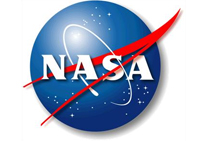GAO: High-Risk Series – An Update February 2011 (NASA Excerpt)

National Aeronautics and Space Administration Acquisition Management
Why Area Is High Risk
The National Aeronautics and Space Administration (NASA) plans to invest billions of dollars in the coming years to explore space, understand Earth’s environment, and conduct aeronautics research. GAO has designated NASA’s acquisition management as high risk in view of persistent cost growth and schedule slippage in the majority of its major projects. GAO’s work has focused on identifying a number of causal factors, including antiquated financial management systems, poor cost major systems.
What GAO Found
NASA has taken steps to improve its acquisition management and continues to work to address systemic weaknesses by adopting practice that focus on closing gaps in knowledge about requirements, technology funding, time, and other resources before commitments are made to a new project. In 2007, NASA developed a plan to improve how it manages its acquisitions. The plan identifies specific actions to strengthen project management, increase accuracy in cost estimating, facilitate monitor contractor cost performance, and improve business processes and financial management; it also establishes points of accountability and metrics to assess progress. NASA has made some progress on the management and oversight of its major projects to improve overall acquisition outcomes, including the following:
– revising its acquisition and engineering policies in 2007 to incorporate elements of a knowledge-based approach and continuing to refine the policies to provide better information for decision makers.
– enhancing cost-estimating methodologies and as of 2009 ensuring that independent analyses are used to provide decision makers with objective representation of likely project cost and schedule results
– implementing a management review process in 2006 to enable it to more effectively monitor a project’s performance, including cost, schedule, and cross-cutting technical and nontechnical issues.
– updating and increasing the availability of program and project management learning and development activities. Importantly, as of October 2009, NASA has certified all major program and project managers to ensure they possess the necessary competencies, training, and experience pursuant to OMB’s guidance.
Although not part of its improvement plan, NASA continues to utilize earned value management to assess contract performance. NASA has also initiated an effort to develop and pilot agency processes with a long-term goal of improving NASA’s ability to utilize earned value management as a s performance assessment tool for in-house projects. Additionally, a key initiative aimed at improving contractor cost performance monitoring has not been fully implemented. In addition, NASA is completing work aimed at identifying the root causes of its acquisition issues. It may take several years before it is apparent whether the initiatives will significantly improve NASA’s acquisition performance. GAO’s work continues to find that NASA has difficulty meeting cost, schedule, and performance goals for many of its projects. For example, GAO reported in 2010 that 10 major NASA projects have experienced cost growth averaging almost $121.1 million, or 18.7 percent, and a 15-month schedule delay. Many of these projects experienced challenges, including developing new or retrofitting older technologies, stabilizing engineering designs, managing the performance of contractors, and resolving issues with partners. Moreover, a recent review by the James Webb Space Telescope Independent Comprehensive Review Panel highlighted significant breakdowns in oversight, accountability, and cost estimating that are likely to lead to an unanticipated cost overrun of approximately $1.4 billion, or potentially more, and a schedule delay of about 15 months.
What Remains to be Done
NASA is implementing a corrective action plan to improve the effectiveness of its project management. Successful implementation of the plan will gain even more importance in an increasingly constrained fiscal environment. In addition to implementing its plan, NASA needs to continue to define metrics it uses to monitor progress of its acquisitions at key milestones, such as project confirmation and critical design review. Further, once those measures are fully defined, NASA should track its decisions against those metrics. Ultimately, NASA mist demonstrate positive outcomes in controlling cost growth and schedule slippage in it major programs and projects. This could take several years to become apparent given the long-term nature of spacecraft development.
GAO Contact
For additional information about this high-risk area, contact Cristina T. Chaplain at (202 512-4841 or chapplainc@gao.gov
Related GAO Products
NASA: Issues Implementing the NASA Authorization Act of 2010. GAO-11-216T. Washington, D.C.: December 1, 2010.
NASA: Key Management and Program Challenges. GAO-10-387T. Washington, D.C.: February 3, 2010.
NASA: Assessments of Selected Large-Scale Projects. GAO-10-227SP. Washington, D.C.: February 1, 2010.
Information Technology: Agencies Need to Improve the Implementation and Use of Earned Value Techniques to Help Manage Major System Acquisitions. GAO-10-2. Washington, D.C.: October 8, 2009.
NASA: Constellation Program Cost and Schedule Will Remain Uncertain Until a Sound Business Case Is Established. GAO-09-844. Washington, D.C.: August 26, 2009.
Federal Contracting: Application of OMB Guidance Can Improve Use of Award Fee Contracts. GAO-09-839T. Washington, D.C.: August 3, 2009.
Federal Contracting: Guidance on Award Fees Has Led to Better Practices but Is Not Consistently Applied. GAO-09-630. Washington, D.C.: May 29, 2009.
NASA: Projects Need More Disciplined Oversight and Management to Address Key Challenges. GAO-09-436T. Washington, D.C.: March 5, 2009.
NASA: Assessments of Selected Large-Scale Projects. GAO-09-306SP. Washington, D.C.: March 2, 2009.
NASA: Agency Has Taken Steps Toward Making Sound Investment Decisions for Ares I but Still Faces Challenging Knowledge Gaps. GAO-08-51. Washington, D.C.: October 31, 2007.
Business Modernization: NASA Must Consider Agencywide Needs to Reap the Full Benefits of Its ENterprise Management System Modernization Effort. GAO-07-691. Washington, D.C.: July 20, 2007.
NASA: Sound Management and Oversight Key to Addressing Crew Exploration Vehicle Risks. GAO-06-1127T. Washington, D.C.: September 28, 2006.








